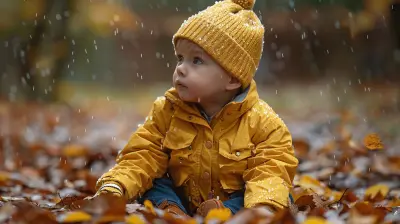Beyond Words: How to Show Gratitude in Meaningful Actions
11 July 2025
Let’s be honest—saying “thank you” is easy. You probably say it a dozen times a day without thinking twice. The barista hands over your coffee, your kid helps pick up toys, your partner remembers to take out the trash… and there it is: “Thanks!”
But here’s the thing—gratitude is more than just words. In fact, it should be.
If we want our children to grow up truly understanding appreciation, or if we're trying to nurture our relationships and connect on a deeper level, then we’ve got to go beyond words. We need to show our gratitude through actions that carry weight and meaning.
So, whether you’re a parent looking to model thankfulness for your kids, or someone wanting to express appreciation in a more heartfelt way, stick around. We’re diving deep into how to turn those warm fuzzy feelings into real-life, meaningful gestures.
What Is Gratitude, Really?
Gratitude isn’t just about being polite—it’s about acknowledging the good in your life and showing value for the people who bring that goodness in. It’s a mindset, a practice, and honestly, a bit of a superpower.And much like love, gratitude means more when it’s shown, not just said.
Why Actions Speak Louder Than Words
Think of it this way: if someone says they care about you but never shows up when you need them, do you really feel valued? Probably not.Words can be wonderful and uplifting, but actions stick. They show that someone put in the effort, took the time, and really meant it.
The same goes for gratitude. A heartfelt action can sometimes mean more than a thousand “thank yous.”
Modeling Gratitude for Kids (Because They're Watching Everything)
If you have kids, you know they’re tiny sponges, soaking up everything you say and do. That’s why modeling gratitude through action is one of the most powerful parental tools you’ve got.Involve Them in Gratitude Activities
Instead of just telling your child to say “thank you,” try this:- Write thank-you notes together after birthdays or holidays. Let them draw a picture or dictate what they want to say.
- Bake something together and bring it to a neighbor or teacher—talk about why you're doing it.
- Volunteer as a family. Whether it's helping at a food pantry or picking up litter, acts of service are powerful lessons.
When kids participate in these moments, they feel what gratitude looks like in action.
10 Meaningful Ways to Show Gratitude Beyond Words
Alright, let’s get into the good stuff. Whether you’re trying to thank your spouse, a teacher, your child, or a friend, here are actions that actually mean something.1. Spend Quality Time
In our busy, buzz-filled lives, time is a luxury. So simply carving out space to be present with someone shows deep appreciation.- Schedule a coffee date with a friend who’s been there for you.
- Watch your child’s favorite movie with them, not just next to them on your phone.
- Surprise your partner with a tech-free night just for the two of you.
The message is clear: “You matter enough for me to pause everything else.”
2. Lend a Hand Without Being Asked
Sometimes gratitude is about stepping in when someone needs help—even if they haven’t said it out loud.- Do a chore your spouse usually handles.
- Help your child with a tough project before they ask for support.
- Offer to babysit for a friend who never gets a break.
These acts show that you see them—and that matters.
3. Leave a Thoughtful Note
Handwritten notes are kind of magical, aren’t they? They’re personal, tangible, and timeless.A sticky note on the bathroom mirror or a quick card tucked into a lunchbox can say:
- “Thanks for always having my back.”
- “I know things have been tough—just wanted to say I appreciate you.”
It’s a small gesture that delivers a big impact.
4. Give a Thoughtful Gift (It Doesn’t Have to Be Expensive)
This isn’t about grand gestures or over-the-top presents. It’s about thoughtful ones.- A favorite snack
- A framed photo of a special memory
- A cozy blanket on a cold day
Gifts that show “I thought about you” carry emotional weight—and that’s what we're going for.
5. Say It in Public
Let others know how much you appreciate someone.- Brag about your partner on social media.
- Compliment your child’s efforts in front of family.
- Acknowledge a coworker’s help during a meeting.
Public recognition can be a powerful form of gratitude—and it boosts the receiver’s confidence in all the best ways.
6. Pay It Forward
Sometimes gratitude isn’t about giving back to someone, but giving because of someone.- Buy a coffee for the person behind you in line.
- Donate to a cause that means something to a friend or loved one.
- Help a stranger in honor of someone who once helped you.
It's like creating a ripple effect of thankfulness.
7. Cook a Meal
Food is love, right?- Cook your partner’s favorite dinner after a long day.
- Involve the kids to make cookies for a neighbor.
- Host a potluck to thank your support system.
There’s something comforting—and memorable—about sharing a homemade meal.
8. Be Fully Present
Yes, this is a tough one in a world of dings and pings, but it’s worth the effort.- Put away your phone.
- Make eye contact.
- Listen. Really listen.
Sometimes, being fully there for someone is the most meaningful way to say “thank you.”
9. Keep Showing Up
Gratitude isn’t a one-and-done kind of deal.- Check in regularly with people who support you.
- Be there not just for big moments—but the little ones too.
- Show consistency and loyalty.
Gratitude shown over time builds trust—and deepens bonds.
10. Teach Others to Do the Same
The ultimate full-circle moment? When you inspire gratitude in action in others.- Encourage your kids to express thanks through gestures.
- Be the person at work who starts a gratitude board or challenge.
- Share stories of meaningful gratitude with your circle.
Gratitude tends to be contagious when done right.
Gratitude in Everyday Parenting
Let’s zoom in on parenting for a second (because hey, this is a parenting blog, after all).Showing daily gratitude in your family can really shape your home’s emotional vibe. Kids who feel appreciated are more confident, more secure, and more willing to show appreciation themselves.
Try These Parent-to-Child Gratitude Actions
- Celebrate small wins. “You put your shoes away without being asked—that’s awesome. Thanks for being responsible.”- Create a gratitude jar. Every night, each family member adds a note about something they’re thankful for.
- Show affection. A hug, a high-five, a gentle touch on the shoulder—they all say “I see you and I appreciate you.”
And Don’t Forget: Let Kids Show You Gratitude, Too
Sometimes we’re so busy teaching our kids to be thankful that we forget it's okay to receive gratitude from them.When your child gives you a drawing that says “Thanks Mom” or helps you fold laundry without being asked—accept it. Celebrate it. That’s gratitude in action.
Final Thoughts: It’s the Effort That Counts
Here’s the truth—showing gratitude doesn't have to be Pinterest-perfect or Oprah-worthy. It just has to be real. Authentic. Intentional.Whether it's a note, a hug, a kind act, or simply spending time—you’re showing the people in your life, “I don’t take you for granted.” And honestly, that matters now more than ever.
So today, look around. Who’s helped you lately? Who’s shown up for you? Who deserves more than just a “thanks”?
Pick one person and go beyond words. Do something that’ll leave a mark.
Because gratitude? It’s a verb.
all images in this post were generated using AI tools
Category:
Teaching GratitudeAuthor:

Max Shaffer
Discussion
rate this article
2 comments
Zanthe Abbott
Actions speak louder—act love!
November 11, 2025 at 4:10 AM

Max Shaffer
Absolutely! Actions truly embody our feelings and deepen connections. Let's show our gratitude through meaningful gestures!
Faelan McLean
Oh sure, because nothing says “I love you” like a heartfelt hug and a homemade dinner! Forget the grocery store pizza; let’s whip up a five-course meal for those ungrateful little tornadoes we call kids!
July 27, 2025 at 3:45 AM

Max Shaffer
Absolutely! Sometimes, the simplest gestures, like a hug or a homemade meal, can have the biggest impact on showing our love and gratitude.


